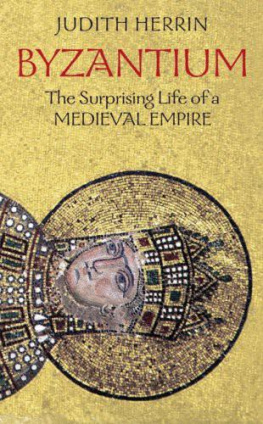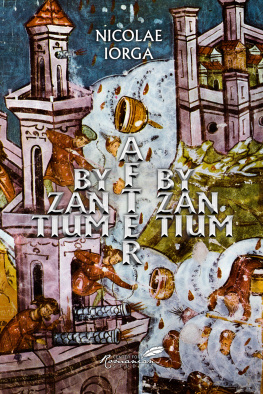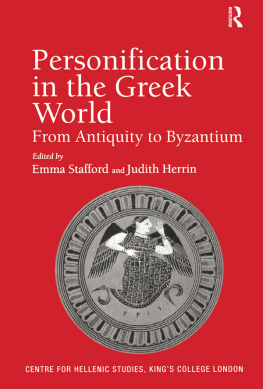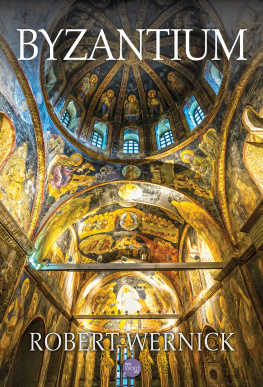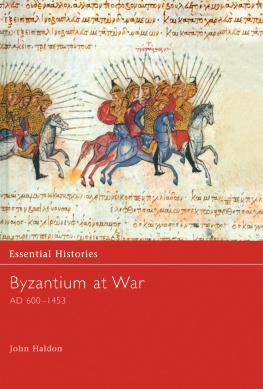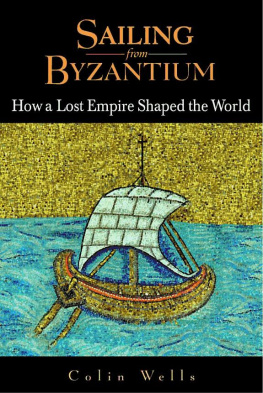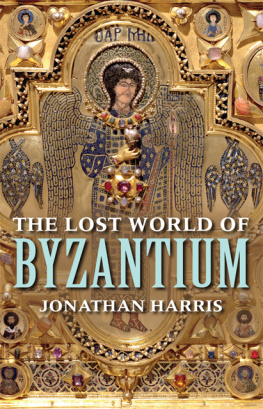Conclusion:
The Greatness and Legacy of Byzantium
The most striking characteristic of Byzantium was not its Christianity, spelled out in its historic councils and conversions, and celebrated in immense churches like Hagia Sophia or in the domestic intimacy of household icons; nor its Roman organization and administration and imperial self-belief; nor its enduring ancient Greek inheritance and system of education: it was their combination. This dated back to the fourth century with the creation of the new capital, its monuments and harbours, which rooted Byzantium in a rich ecology of traditions and resources.
Yet the modern stereotype of Byzantium is tyrannical government by effeminate, cowardly men and corrupt eunuchs, obsessed with hollow rituals and endless, complex and incomprehensible bureaucracy. Montesquieu developed these caricatures during the seventeenth century as he tried to explain the reasons for the decline of the Roman Empire, and Voltaire gave them greater prominence, adding his own passionate elevation of reason above religion. While the former dismissed the Greek Empire, as he called it, because of the excessive power of monks, attention to theological dispute and an absence of the recommended separation of ecclesiastical from secular matters, the latter could condemn it utterly as a disgrace for the human mind. Perhaps both were also provoked by Louis XIVs use of Byzantine models as a means of celebrating despotic kingly rule.
Gibbons more familiar account in his History of the Decline and Fall of the Roman Empire, which extended to 1453, built on these features and identified Byzantium as a passive link with Graeco-Roman antiquity. In itself, he argued, it was of no interest except that it connected the classical period to the barbarian nations of Western Europe and the most splendid and important revolutions which have changed the state of the world. Perhaps the most forthright expression of Byzantiums negative reputation belongs to the nineteenth-century Irish historian William Lecky. In a withering, misogynistic judgement, he claimed:
Of that Byzantine empire, the universal verdict of history is that it constitutes, without a single exception, the most thoroughly base and despicable form that civilization has yet assumed. There has been no other enduring civilization so absolutely destitute of all forms and elements of greatness, and none to which the epithet mean may be so emphatically applied The history of the empire is a monotonous story of the intrigues of priests, eunuchs, and women, of poisonings, of conspiracies, of uniform ingratitude.
As I hope to have shown, far from being passive, Byzantium was active, surprising and creative, as it reworked its prized traditions and heritage. It bequeathed to the world an imperial system of government built upon a trained, civilian administration and tax system; a legal structure based on Roman law; a unique curriculum of secular education that preserved much of classical, pagan learning; orthodox theology, artistic expression and spiritual traditions enshrined in the Greek Church; and coronation and court rituals that had many imitators. In the sixth century, the merchant Cosmas Indicopleustes also noted:
There is another mark of the power of the Romans, which God has given them, I mean that every nation conducts its commerce with their nomisma, which is acceptable in every place from one end of the earth to the other In no other nation does such a thing exist.
For centuries after the fall of the Queen City to the Turks, the term bezant was still used, redolent of the famed reliability of Byzantine gold. Despite the eleventh-century devaluation, the name bezant provides an echo of the gold coins powerful contribution to trade in the early Middle Ages, when Byzantium protected the growth of Venice and other Italian city-states.
Artistically, its silks and ivories set standards for beauty and craftsmanship, while its images still continue to inspire icon painters in orthodox communities throughout the world. Theologically, its intense, century-long inner struggle with the iconoclast strictures of the Ten Commandments, precipitated by their forceful adoption by Islam, became a reference point for Puritans nearly a thousand years later. Its ability to conquer and, above all, to defend itself and its magnificent capital was to shield the northwestern world of the Mediterranean during the chaotic but creative period that followed the collapse of the Roman Empire in the West. Without Byzantium there would have been no Europe.
During this critical early-medieval period, when the Arabs stormed out of the desert to capture the Holy Places of the Jews and the Christians and the granaries of Egypt, only Constantinople stood in the way of their ambitions. Had the fortifications of the Queen City and the determination and skills of its inhabitants emperor, court and people not ensured the security of this defensive system, Islam would have supplanted Byzantium in the seventh century. Having accomplished the conquest of Damascus, Jerusalem, Alexandria and the Persian empire, the Muslims would surely have overrun the Mediterranean empire created by Rome, once they had incorporated Constantinople with its resources and revenues, its shipyards and commercial networks. In the same way that they progressed along the southern littoral of the Mediterranean into Spain, they would have advanced across the Balkans to dominate the northern shore as well.
Byzantium was thus partly defined in rivalry with successive Arab states, and relations between Christianity and Islam had a formative influence in the empires development. As we have seen, its initial contact with Islam in the seventh century came as a complete surprise. Byzantiums historic defeat of Persia distracted attention from what seemed at first no more than tribal marauders, if with a chiliastic twist. Instead, the appearance of the Arabs under the banner of the Prophet turned into a long trauma. The impact of their immediate military triumphs in the decade 632/42 forced Byzantium to withdraw into Asia Minor, abandoning the most holy centres of Christianity, as well as some of the earliest monastic sites in Egypt, Palestine and Syria. Yet it was also able to beat off many Muslim sieges of its capital and to hold a border at the Taurus Mountains. The rise and frustration of Islam resulted in a formative three-way division of the ancient world into unequal parts: the Muslim east which extended from Syria and Egypt across the coast of Africa and deep into Spain; the western part which adopted the name Europa; and the eastern part which remained the core of Byzantium.
During the first protracted encounter with Islam, Byzantine consternation at the Muslims enduring military success was coupled with condemnation of their theology. It was considered a heresy, albeit rather different from other seventh-century doctrinal errors. While Byzantium later accepted that Islam was a revelation from the same one God, they were slow to develop any detailed knowledge of the Quran, or the claim that Islam had replaced Christianity as the true revelation. Instead, arguments long used in Christian polemics with Judaism were refashioned and turned against the new opponent; vigorous dialogues were produced to reassure the Christian side while condemning the Muslim. In the eighth and ninth centuries, these took on even more strident forms with the development of Byzantine iconoclasm both a reaction to Islam and a means of consolidating the empire to combat the Islamic challenge.
After 750, internal strife and civil war among the Muslims led the Abbasid dynasty to move the capital from Damascus to Baghdad, on the banks of the Tigris in Persia. The rise of the Abbasids split the Islamic world into rival caliphates, leaving the Umayyads based in Spain. This eased pressure on Byzantium. Although the new centres of Muslim power in Baghdad and Cordoba were now more distant from Constantinople than Damascus, they remained a focus of constant negotiation. Byzantium tried to maintain diplomatic relations with all the rival Islamic authorities.

